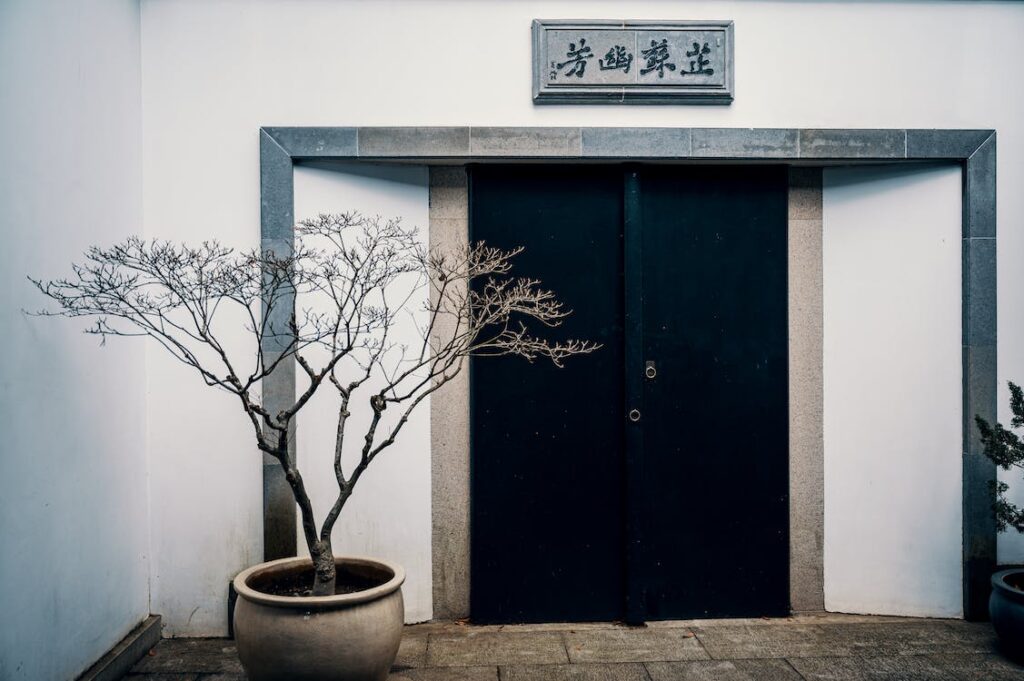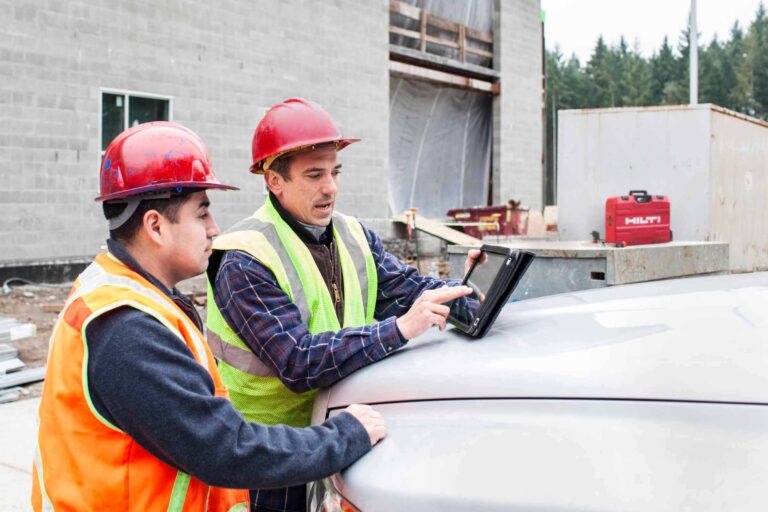In an era marked by rapid technological advancements and a constant pursuit of innovation, the construction industry stands at a crossroads where the past and the future intersect. On one hand, there’s a growing emphasis on modern construction techniques, materials, and designs driven by efficiency and sustainability. On the other, there’s a profound appreciation for preserving and celebrating cultural heritage, architectural traditions, and historical significance. Striking the delicate balance between tradition and innovation has become an imperative in modern construction. In this blog post, we will delve into the complex and fascinating interplay between cultural heritage and modern construction, exploring the challenges, opportunities, and strategies for achieving harmony between the two.

The Significance of Cultural Heritage in Construction
Cultural heritage encompasses the traditions, customs, artifacts, and architectural achievements passed down through generations. It reflects the identity and history of a society and is a source of pride and inspiration. When it comes to construction, cultural heritage plays a pivotal role in shaping the built environment. Here are some of the reasons why it’s crucial to consider cultural heritage in modern construction:
Preservation of Identity
Buildings and structures are not merely bricks and mortar; they are the tangible embodiment of a community’s identity, a living testament to its history, and a canvas that paints the stories of generations past. These architectural marvels stand as guardians of cultural values, carrying forward the traditions, customs, and beliefs that have shaped a community over time. In their presence, people find a profound connection to their roots, a bridge that traverses through the annals of history, and a mirror that reflects the enduring spirit of their ancestors.
Preserving cultural heritage in construction is akin to safeguarding the pages of a community’s storybook. Each building holds within its walls a chapter, each architectural detail a paragraph, and each brick or beam a sentence, all contributing to the larger narrative. By cherishing and maintaining these structures, communities not only honor their past but also cultivate a deep sense of continuity. This continuity serves as a guiding star, offering a steady hand in the face of rapid change and modernization. It is a source of comfort, a constant reminder of where a community comes from, and a foundation upon which its future can be built.
Furthermore, cultural heritage preservation in construction acts as a beacon that guides communities through the currents of time. In an ever-evolving world, where the tides of globalization can sometimes threaten to wash away local identities, these preserved structures serve as anchors, grounding communities in their unique cultural heritage. They allow people to navigate the present with a firm footing in the past, offering a tangible link to the traditions and values that define them.
In essence, the act of preserving cultural heritage in construction is not just about bricks and mortar; it’s about safeguarding the soul of a community. It’s about recognizing that within the architectural details and historical significance lies the heartbeat of a people, the echo of their stories, and the essence of their identity. As these buildings stand the test of time, they remind us that the past is not something to be forgotten but a source of strength and inspiration, guiding us as we move forward into the future.
Historical Significance
Many historical buildings and sites have significant historical importance. They may have witnessed pivotal events or been associated with prominent figures. Preserving these structures allows us to connect with our history and learn from it.
Architectural Beauty
Architectural styles from different eras are celebrated for their unique beauty and craftsmanship. Incorporating elements of cultural heritage into modern construction can enhance the aesthetics of a project, making it visually appealing and culturally rich.
Tourism and Economic Benefits
Cultural heritage sites often attract tourists, contributing to the local economy. Preserving and showcasing these sites through responsible construction practices can stimulate economic growth and provide job opportunities.
Challenges in Balancing Tradition with Innovation
While the importance of preserving cultural heritage is undeniable, it’s not always a straightforward task to integrate tradition with modern construction. Several challenges complicate this delicate balancing act:
Technical Compatibility
Balancing modern construction techniques with historical structures can be challenging due to differences in methods, materials, and codes. Historical buildings were constructed using techniques and materials specific to their eras, which may not align with contemporary practices. Preserving the historical integrity of a site while ensuring technical compatibility with modern construction methods is a complex task. This involves understanding the historical context, maintaining unique craftsmanship, and navigating a web of regulations. It’s a delicate process that requires expertise in historical preservation and a deep respect for the cultural and architectural heritage these structures represent.
Financial Constraints
Preserving cultural heritage is a noble endeavor that often necessitates a considerable allocation of financial resources. The meticulous work involved in restoration, the procurement of specialized materials, and the engagement of skilled craftsmen all contribute to the costs associated with heritage preservation. Moreover, adhering to stringent conservation standards and regulations can further escalate expenses.
However, the challenge lies not just in the magnitude of financial resources required but also in the delicate act of balancing these preservation efforts with the often tight budget constraints that accompany modern construction projects. In an era where efficiency and cost-effectiveness are paramount, allocating funds to heritage preservation can indeed appear daunting. It necessitates careful financial planning and a deep commitment to the preservation of cultural identity, even in the face of budgetary limitations.
Furthermore, the financial aspect of heritage preservation extends beyond the immediate project costs. It includes the long-term commitment to maintenance and ongoing conservation efforts, ensuring that the cultural heritage remains intact and accessible for future generations. Therefore, while financial constraints may present a challenge, they must not deter us from the crucial task of preserving the cultural fabric that weaves our collective history.
Regulatory Hurdles
Historical preservation is subject to stringent regulations and approvals. Navigating these regulations while meeting modern construction standards can be a complex and time-consuming process.
Lack of Skilled Craftsmen
Traditional craftsmanship and skills required for restoring historical structures are sometimes lost or in short supply. Finding skilled craftsmen who can faithfully recreate historical details can be challenging.
Innovative Design Challenges
Incorporating modern design innovations while preserving historical authenticity can be a delicate task. Striking the right balance between innovation and tradition in design requires careful consideration.

Strategies for Balancing Tradition and Innovation
Achieving harmony between cultural heritage and modern construction is not an insurmountable challenge. Several strategies and approaches can help navigate this complex terrain:
Comprehensive Documentation
Before undertaking any construction project involving cultural heritage, thorough documentation is essential. This includes detailed records of the existing structure, historical significance, and any previous renovations. This documentation serves as a valuable reference point throughout the project.
Collaboration and Expertise
Engage experts in cultural heritage preservation, historical architecture, and restoration. Their knowledge and experience are invaluable in making informed decisions that honor tradition while embracing innovation.
Adaptive Reuse
Consider adaptive reuse as an option. Rather than demolishing historical structures, repurpose them for modern uses. This approach preserves the building’s cultural significance while giving it a new lease on life.
Incorporating Sustainable Practices
Modern construction can align with cultural heritage by adopting sustainable practices. This includes using eco-friendly materials, implementing energy-efficient systems, and reducing the environmental impact of the project.
Architectural Sensitivity
Architects and designers should approach projects with sensitivity to the cultural context. This involves studying and understanding the architectural and historical context of the site and incorporating elements that pay homage to tradition.
Public Engagement
Involve the local community in the decision-making process. Seek their input and feedback, as they often have a deep connection to the cultural heritage of the area. Public support can be instrumental in successful preservation efforts.
Tradition and Innovation Balance On Display
Let’s explore some real-world examples of construction projects that have successfully balanced tradition and innovation:
The Louvre Pyramid, Paris, France
The addition of the glass pyramid entrance to the Louvre Museum is a classic example of innovative modern architecture blending seamlessly with historical heritage. Designed by I. M. Pei, the pyramid preserves the grandeur of the Louvre Palace while providing a contemporary entrance.
The Great Wall of China Restoration
Efforts to restore and preserve the Great Wall of China showcase a commitment to cultural heritage. Skilled craftsmen use traditional construction methods and materials to repair and maintain this iconic historical structure.
Dubai Opera House, UAE
The Dubai Opera House is a modern architectural marvel situated in a region rich in cultural heritage. Its design respects the historical context of the area while offering a state-of-the-art venue for the performing arts.
Machu Picchu Visitor Center, Peru
The Machu Picchu Visitor Center was constructed to accommodate tourists visiting the famous archaeological site. It employs sustainable construction practices and materials that harmonize with the natural and historical surroundings.
Balancing tradition with innovation in modern construction is not just an aesthetic concern; it’s a moral and cultural imperative. Our built environment should tell the story of our past, reflect our values, and adapt to the needs of the present and future.
As we move forward in the 21st century, it is possible to navigate the complex terrain of cultural heritage and modern construction. With careful planning, expertise, and a commitment to preserving our historical treasures, we can create a built environment that honors tradition while embracing the innovations that make our world more sustainable and efficient.
The integration of cultural heritage into modern construction is not a limitation but an opportunity. It allows us to create spaces that celebrate our shared history and showcase the best of our technological achievements. By striking this harmonious balance, we ensure that our built environment remains a source of inspiration, pride, and cultural significance for generations to come.
A good construction software makes use of good project management functionality, estimate and financial/accounting tool functionality, job management, scheduling and planning and support functionalities and more. WunderBuild is a construction management software that aims to provide all of these functionalities and more to bring out the best outcomes for a project. Enquire here today, to learn more about Wunderbuild and start your free trial.




